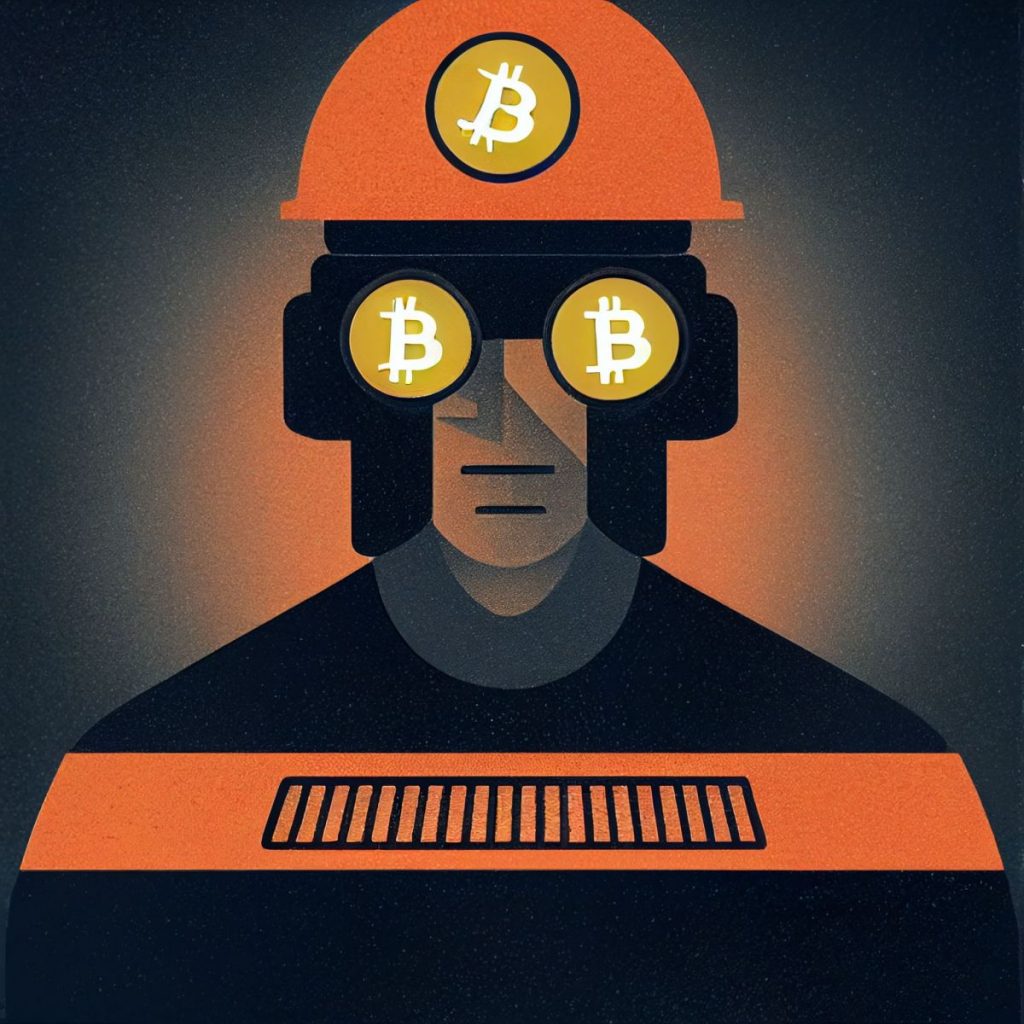An Overview of the Bitcoin Blockchain: For Those New to the Concept
In Brief
At its core, the Bitcoin blockchain serves as a decentralized and distributed ledger supporting the Bitcoin ecosystem.
The decentralized nature of the Bitcoin blockchain is celebrated for its robustness and resistance to changes.
If Bitcoin is a term you've come across, understanding its mechanisms may still be a gray area for you. Here, we will break down the essentials of the Bitcoin blockchain, elucidating its operations and outlining the advantages of utilizing this technology.

Introduction
Functioning as a decentralized and distributed ledger, the Bitcoin blockchain meticulously logs every Bitcoin transaction in a publicly accessible and permanent record. These transactions are eventually compiled into blocks, which are sequentially linked to form the complete blockchain.
Beyond cryptocurrency, the Bitcoin blockchain lays the groundwork for numerous other applications—think smart contracts, decentralized exchanges, and beyond. This versatility empowers developers to create a myriad of applications on its backbone, birthing a thriving ecosystem. startups and businesses .
Acknowledged for its security and permanence, the Bitcoin blockchain’s decentralized nature eliminates a sole point of control or failure. The entire network thrives on a global array of computers running Bitcoin software, making it virtually impossible to manipulate since consensus among all participating machines is necessary.
The Bitcoin blockchain stands as a fascinating and groundbreaking piece of technology with immense potential. It has already transformed our perceptions of money and data, and as its mainstream acceptance continues to grow, we are likely to witness a surge in functional blockchain applications.
How Does a Blockchain Work?
To grasp how a blockchain operates, it's essential to familiarize yourself with its core components.
Key components that constitute a blockchain include:
Blocks: Each block contains a listing of newly validated transactions. As these blocks seamlessly get added to the chain, the contents become progressively more challenging to alter.
Transactions: A transaction signifies a record of an exchange occurring between two parties. These transactions are aggregated into blocks, which are subsequently incorporated into the blockchain.
Transaction Process
Upon the initiation of a transaction, it gets broadcast across the network before being authenticated by networked computers. Each machine timestamps the transaction and records it onto its digital ledger. Once a transaction finds its place on a ledger, it is immutable and remains forever documented. This results in a secure and permanent archive of all blockchain transactions.
Decentralization of Blockchain: A defining characteristic of blockchain technology is its decentralized structure. Unlike conventional databases housed on singular servers or clusters, a blockchain spans a vast network of interconnected computers.
This decentralized architecture significantly enhances blockchain’s defenses against hacking and unauthorized alterations, as there is no singular point vulnerable to attacks. It also enables the blockchain to function without relying on a third party for transaction approvals.
Transparency: Another pivotal aspect of blockchain is its transparency. Every transaction conducted on the blockchain is publicly visible to anyone with network access, ensuring total visibility into all activities performed on the blockchain.
The Bitcoin blockchain serves as the inaugural and most recognizable instance of blockchain technology. However, a variety of other blockchains are evolving to address distinct needs.
Miners, who can be individuals or machines, authenticate transactions by tackling intricate mathematical problems. A miner adds a new block to the blockchain upon successfully solving one of these challenges.

Understanding the elements of a blockchain lays the groundwork for comprehending its operation.
Each block incorporates a hash, which is a unique identifier for that block. Blocks also encompass transactions, which document exchanges between parties.
When integrating a block into the blockchain, altering its details becomes a formidable task. Each block is linked through its hash and the hash of its predecessor. Adjusting information within a block implies revising its hash, which in turn alters the preceding block's hash, leading to a chain reaction. This interconnected nature makes hacking into a blockchain incredibly difficult.
Miners validate transactions by overcoming complex mathematical challenges. Upon solving these, a miner has the right to add a new block to the blockchain, earning cryptocurrency as a reward.
The complexity of the mathematical problems miners must address escalates with the addition of each block to the blockchain. Each problem has a singular correct answer, and as more miners join the effort and compete to solve these, the challenge intensifies.
Is Blockchain Secure?
Indeed, blockchain serves as a reliable method for data tracking and storage. Transactions occurring on the blockchain are authenticated and time-stamped by networked computers, guaranteeing their permanence and resistance to tampering.
In summary, blockchain offers a secure, transparent approach to data tracking. Its decentralized nature fortifies it against hacking, while its visibility facilitates comprehensive oversight of all network transactions.
Blockchain stands out as an innovative technology that possesses the potential to disrupt many sectors. However, given its nascent phase, it will be intriguing to monitor its evolution in the years to come.
Short story of Bitcoin blockchain
In their 1991 paper, 'How to Time-Stamp a Digital Document,' Stuart Haber and W. Scott Stornetta presented the foundational idea of blockchain technology. They elaborated on methods to secure information through an unbroken series of timestamps.
Initially, Bitcoin was crafted to facilitate trading within the Bitcoin cryptocurrency ecosystem. However, its early adopters and creators quickly recognized its broader capabilities. Consequently, they designed the blockchain to track not only the movement of tokens but a wider array of information.

The marvel of blockchain lies in its capacity for secure, tamper-proof data recording independent of any centralized authority. This feature lends itself to numerous uses beyond cryptocurrency, such as smart contracts, supply chain oversight, and electoral systems.
The Bitcoin blockchain, inaugurated in 2009, remains the first and most prominent example of blockchain utility. Serving as a public ledger that meticulously documents all Bitcoin transactions, it operates on a decentralized basis without a confined storage location, dispersed across a vast computer network, making it highly resilient to hacking attempts.
The triumphant success of the Bitcoin blockchain has catalyzed the creation of other innovative blockchains. Ethereum, for instance, is engineered to support smart contracts, showcasing the transformative potential of blockchain technology across various industries.
Bitcoin vs. Blockchain
In recent years, Bitcoin and blockchain technology have captured public attention. As the foremost cryptocurrency, Bitcoin has sparked extensive discussions, with differing opinions praising it as a revolutionary advancement or cautioning against potential market bubbles. Meanwhile, blockchain gradually earns acceptance in mainstream circles, as major corporations and financial bodies start exploring its myriad applications. money What exactly distinguishes Bitcoin from blockchain? Here’s a brief comparison:
Bitcoin represents a digital currency that leverages cryptographic principles to secure transactions and regulate the generation of new units. In contrast, blockchain is a decentralized database that archives transaction records, paving the way for secure, transparent, and tamper-proof data management.
Although Bitcoin operates based on blockchain technology, the two concepts are not interchangeable. Blockchain is applicable in various areas extending beyond cryptocurrency, including identity verification and supply chain management.
The pivotal distinction between Bitcoin and blockchain lies in their functions; Bitcoin serves as a decentralized currency facilitating peer-to-peer transactions, while blockchain functions as a distributed database capable of securely and transparently storing data. Despite the excitement surrounding Bitcoin, its long-term viability remains uncertain. Blockchain, on the other hand, is making significant headway, being widely recognized as a transformative technology with remarkable potential.
A block logs either some or all of the newest transactions yet to be documented in previous blocks. Once a block is tacked onto the end of the blockchain, altering its contents becomes a daunting task. This complexity arises because each block retains its own hash and the preceding block's hash. Hashes stem from a mathematical function that converts digital data into a sequence of alphanumeric characters. Any edits to that data prompt a change to the hash. succeed or fail Consequently, if someone attempts to alter a transaction already recorded within a block, they would need to modify that block’s hash along with the hash of each subsequent block in the chain. Achieving this is virtually impossible, making the added block exceptionally resistant to alterations while preserving the authenticity of the transaction data.
What is a Block?
An Introduction to the Bitcoin Blockchain: A Comprehensive Overview Bitcoin The Bitcoin blockchain acts as a public and distributed ledger that meticulously records every Bitcoin transaction. It not only helps in confirming ownership but also plays a crucial role in validating new transactions while ensuring the overall security of the Bitcoin ecosystem.

An Overview of the Bitcoin Blockchain: A Comprehensive Introduction
What is the Process of Integrating a Block into the Blockchain?
If Bitcoin rings a bell for you but the mechanics remain unclear, this article will shed light on the foundational aspects of Bitcoin's blockchain and how it truly operates.
FTC Fails in Attempt to Prevent Microsoft-Activision Merger
Published on October 10, 2022, at 10:46 AM, with no further updates post-publication.
Bitcoin Blockchain Size
The Bitcoin blockchain To enhance your experience in your local language, we sometimes utilize an automatic translation tool. Please keep in mind that this translation may not be entirely accurate, so it's advisable to check the original text as well.
The essence of Bitcoin’s blockchain lies in its decentralized and distributed ledger, which supports the entire Bitcoin framework.
The impressive decentralized architecture of the Bitcoin blockchain is praised for its remarkable security features and unchangeability.

If Bitcoin has captured your interest but you’re puzzled by its functionality, this guide will demystify the Bitcoin blockchain and elaborately outline its benefits.
How Are New Blocks Incorporated into the Blockchain?
Despite these challenges, the Is Blockchain Technology Limited to Bitcoin Only? The Bitcoin blockchain, which serves as the backbone of the Bitcoin network, is essentially a public record that logs every transaction of Bitcoin in an immutable manner. These transactions are aggregated into blocks and systematically linked in chronological order to comprise the blockchain.
The Bitcoin blockchain acts as a launchpad for numerous applications beyond just cryptocurrencies, including smart contracts and decentralized platforms, providing developers with the flexibility to create a diverse array of solutions atop this technology.
Is Blockchain Technology Exclusive to Bitcoin?
The decentralized nature of the Bitcoin blockchain contributes significantly to its security and resistance to alteration. With no central governing body, the network is supported by a worldwide system of computers running Bitcoin software. This distribution makes it nearly impossible to tamper with the blockchain since a consensus would be needed from all computing entities involved.
The Bitcoin blockchain presents itself as an innovative and captivating technology full of potential. It has already transformed our perceptions related to money and data management. As it garners more acceptance in the mainstream, we can expect an increase in practical applications utilizing this technology.
FAQs
To grasp the workings of a blockchain, it's essential to first familiarize yourself with its various components.
The primary elements that constitute a blockchain include:
Blocks: Each block represents a compilation of recent transactions. As these blocks are appended to the blockchain, altering their contents becomes significantly more challenging.
Transactions: A transaction denotes an exchange record between two involved parties. These records are collectively bundled into blocks and subsequently integrated into the blockchain.
Upon initiating a transaction, it is disseminated across the network and authenticated by the linked computers. Each participating computer timestamps the transaction and incorporates it into its own digital ledger. Once a transaction is recorded in this ledger, it becomes immutable, establishing a permanent and secure trail of all activities conducted on the blockchain.
Decentralization of Blockchain: A fundamental characteristic of blockchain technology is its decentralized structure. Instead of relying on a single server or a coalition of servers, a blockchain exists across an extensive array of computers.
Conclusion
This decentralized framework enhances the blockchain's security against hacking and interference since there is no singular target for an attack. It allows the blockchain to function autonomously, without needing third-party verification for transactions.
Transparency: Transparency is another critical aspect of blockchain technology. All transactions recorded on the blockchain are public and accessible to anyone with network access, promoting full visibility of all blockchain activities.
Related articles:
Disclaimer
In line with the Trust Project guidelines Miners engage in solving complex problems to validate transactions. Upon successfully solving a challenge, a new block is appended to the blockchain, rewarding the miner with a cryptocurrency payout.







